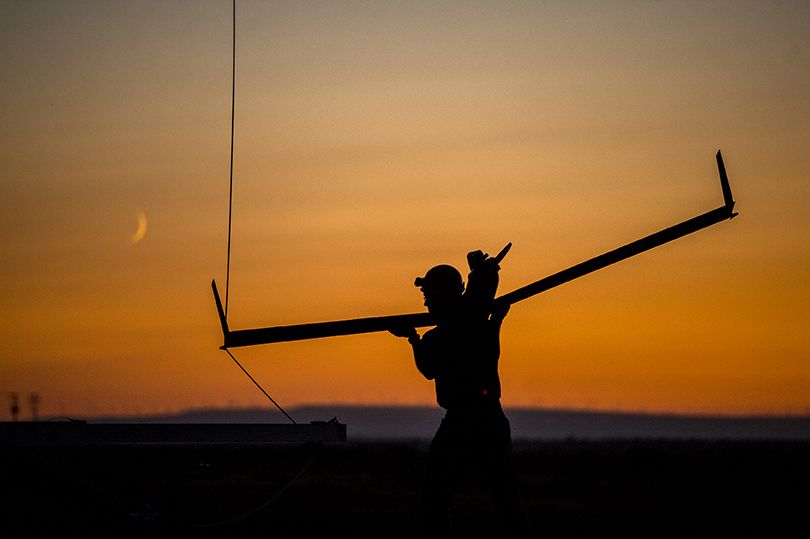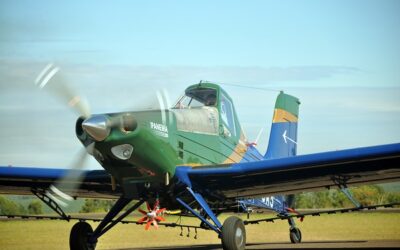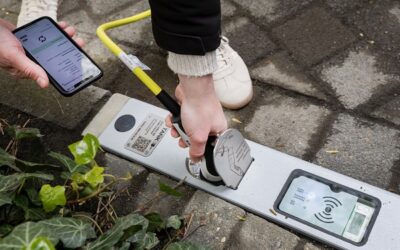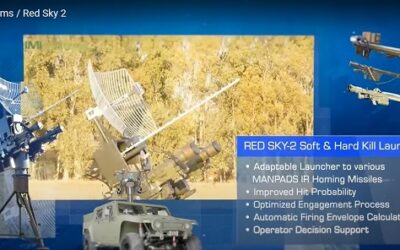Monch Correspondent Marty Kauchak files this end-of-day report from the US Navy League Sea-Air-Space Expo at Gaylord National Convention Center, National Harbor, MA/USA.
There is an increasing tempo of research, development, test and evaluation in the US Navy’s unmanned underwater- and surface vehicles (UUV)/(USV) programmes.
Since the August 2016 Annual Naval Technology Exercise (ANTX) in Newport, Rhode Island, the General Dynamics’ Bluefin Robotics’ Bluefin SandShark micro-autonomous underwater vehicles (M-AUV) team officially launched the product for sale with deliveries expected for this summer.
Matt Graziano, the Director of Underwater Systems for General Dynamics Mission Systems (Booth #1905), further noted the team is working on another ANTX demonstration that involves cross-domain communications taking place in August. “In addition, General Dynamics’ Bluefin Robotics Bluefin-21 product line of deep-water AUVs is the basis for the US Navy Knifefish Surface Mine Countermeasure UUV,” the industry expert pointed out. “Knifefish is designed to autonomously search, detect, classify, and identify buried, bottom, and volume mines in high clutter environments in a single pass.”
Within the last several weeks the General Dynamics Mission Systems’ Knifefish team successfully completed a comprehensive evaluation of Knifefish. In coordination with the US Navy, the test events took place off the coast of Boston using submerged Navy mine test targets. Graziano concluded, “The evaluation represents a significant milestone in the Knifefish program and demonstrates the UUV’s capability to detect and classify potential mines, at a variety of depths, each posing a unique threat to naval vessels operating in a mission area.”
Riptide Autonomous Solutions (Riptide) (Booth #1253) has been strengthening its competencies in the small UUV space. Indeed, last summer Riptide shipped six Micro-UUVs to the US Navy. The unmanned undersea vehicles were configured with a dry payload volume that will enable rapid payload development and demonstration, and allow the Navy to test various new sensor systems with these small flexible vehicles. To place the Riptide’s µUUV footprint in perspective, such a vehicle may typically weigh 12-36 lbs. (5.4-16kg), typically be 25-72in (635-1,828mm) in length, and have a typical diameter of 4.875 inches.
In response to the author’s request to discuss the art-of-the possible and how much smaller micro-UUVs may evolve to in the next five years, William Key, the marketing manager at Riptide Autonomous Solutions (Riptide), responded: “It is our opinion that, although smaller UUVs are possible technically, the limiting factors will be the available power source as well as payload size and power consumption. Theoretically, a smaller diameter vehicle would create less drag and therefore require a smaller battery or other power source. The issue is that the small diameter would radically limit the available payloads for the vehicle.”
Of greater significance, the corporate media expert noted as a result of customer requirements, Riptide sees the vehicle growing in diameter and length to better accommodate various payloads as opposed to shrinking in size. Key continued: “It is our opinion that it is the cost of the vehicle which will be the driving factor in future applications, since a larger vehicle typically costs more than a smaller vehicle. Riptide’s approach to larger vehicles is to utilize more than 95% of the electronics and software from the small, low cost µUUV in the larger 7.5 in. diameter and 9.375 in. diameter vehicles, with the result that these larger vehicles, while having greater internal volume to accommodate larger payloads, only increase in price relative to the cost of material for the larger bodies and therefore remain as low cost vehicles with the 7.5 in. vehicle priced at $29,975 and the 9.375 in. vehicle priced at $49,975.”
While Riptide had no industry partners for the 2016 batch of Micro-UUVs delivered to the US Navy, for other µUUV applications, the Pembroke, Massachusetts-based company has worked with a broad spectrum of industry partners.
Asked about technology breakthroughs in the Micro-UUV sector, Key pointed to the installation of the Open Water Power (of Somerville, Massachusetts) Aluminum Seawater Battery. When it becomes available in second quarter 2017, the battery, “will provide the µUUV with sufficient endurance to enable applications such as long loiter swarming or long range data collection. We view power as the next barrier in expansion of UUV applications in the undersea domain and our exclusive agreement with Open Water Power for micro UUVs batteries enables the µUUV operator to accomplish tasks never thought to be feasible with UUVs.”
Additionally, Riptide is expanding the Riptide Family of UUVs to include larger, low cost vehicles to accommodate increasingly large payloads. Key concluded: “It is our view that the UUV is a ‘truck’ to transport payloads and payload sensors so we are addressing our customer’s requirements with a selection of trucks: a 1/4-ton pickup, a 1/2-ton pickup and a 1-ton pickup.”
This Navy League finds Textron Systems Unmanned Systems (Booth #1705) continuing its on-water testing, which began this January, for the fourth-generation Common Unmanned Surface Vehicle (CUSV), which will support the US Navy’s Unmanned Influence Sweep System (UISS) programme. Under that programme, Textron Systems has been designing one Engineering Development Model (EDM) which includes the vehicle, its command-and-control software, and mission payload, which are designed for seamless integration into the Littoral Combat Ship (LCS) mission module control station.
Wayne Prender, Textron Systems Unmanned Systems’ vice president of Control & Surface Systems, explained the CUSV systemmes’-level integration and test (I&T) phase includes functional testing of the systemme’s propulsion systems, datalinks, payload performance, as well as on-water manoeuvrerability. “Textron Systems will move into builders’ trials upon completion of I&T and then formal testing to validate systemme functionality with the US Navy later this year.”
After testing is complete, this EDM will support the U.S. Navy’s LCS mine countermeasure (MCM) mission package as a MCM systemme, designed for influence sweeping of magnetic and acoustic mines.
More significant, Textron, “recently received a $14.8 million award from the US Navy for two additional CUSVs to support the Navy’s MCM mission. The US Navy intends to use these two CUSVs to further its comprehensive MCM mission objectives, which includes mine-hunting and potentially mine-neutralization, as well as mine-sweeping,” Prender added. “This demonstrates the CUSV systemme’s multi-mission capabilities and large, configurable payload bay – we believe these features will greatly benefit the US Navy’s mission to safely secure our waters. Period of performance for these two CUSVs began on March 2 and is expected to be completed by the end of 2018.”
To design and develop the fourth-generation CUSV, Prender further pointed out, “we partnered with fellow Textron Systems business unit Marine & Land Systems to leverage its proven ship-building capability alongside our unmanned systems expertise. Working together, we implemented design enhancements to the vehicle including improved propulsion systems for enhanced range, speed, stability, and endurance.”
With its optimized hull structure, the vehicle offers reduced drag, improved stability, and increased strength for survivability. Other enhancements included reduced roll and pitch movement and a significantly expanded payload bay and weight-carrying capability.
In addition, the EDM system, as well as the two additional CUSV systems, are powered by twin Cummings diesel engines, which generate a combined 1100 horsepower.
The Textron unmanned systems expert added that, “in addition to mine-hunting and mine-sweeping, the CUSV is capable of carrying various other payloads, including mine neutralization systems, nonlethal weapons, and intelligence, surveillance and reconnaissance sensors.”
Through the start of Navy League, the variations of the CUSV have amassed more than 2,000 on-water operational hours – with readers of this expo report having opportunities to view CUSV later this year. Prender concluded: “Textron Systems is continuously looking for opportunities to demonstrate the system’s multi-mission capabilities – and when we are able to share news with you about upcoming demonstrations, we will let you know. We can say that a model of the CUSV will be on display at the following tradeshows and exhibitions: AUVSI Xponential [May 8-11] and Maritime Air Systems & Technologies [June 12-14].”
In the unmanned air system (UAS) sector, Insitu (co-located with Boeing in booth #1939) is meeting the technical and business dynamics of the current- and near-term military UAS market with a number of initiatives. In one instance, the company’s UAS are expanding their presence in the US sea services’ unmanned systems’ orders of battle.
The RQ-21A BLACKJACK, a variant of the company’s Integrator unmanned system, completed its first scheduled deployment with the US Marine Corps’ 22 Marine Expeditionary Unit last December. RQ-21A has significantly larger payload mass, volume and power than other small legacy-era UAS currently being used in theatres of operation. The system includes electro-optic and mid-wave infrared sensors with a laser rangefinder and infrared marker. “The good news on RQ-21 BLACKJACK is that we are deployed both shore based and in the maritime environment with the US Marine Corps. Things with Blackjack are going quite well,” Don Williamson, the vice president and general manager, at Insitu Defense, reported.
Insitu is taking the ScanEagle UAS to its next plateau of fielding to military customers and capabilities.

As delegates gather at Navy League, the ScanEagle remains, “deployed all around the world,” Williamson pointed out. Insitu’s most recent customer is the US Coast Guard, with the company providing UAS services via ScanEagle aboard one National Security Cutter. Insitu’s maritime portfolio is certain to further expand with its SkyHook technology. The capture system eliminates runways and nets in the construct of a small footprint design, allowing the operation of an Insitu UAS on “single spot” ships.
Beyond an increased customer base, Insitu is preparing to field the new N20 engine (with industry partner Orbital UAV Engine (Australia)) for ScanEagle in the next several months. Additionally, Insitu bolstered the Scan Eagle payload with a visual detection and ranging (ViDAR) optical system for broad area surveillance during last October’s Royal Navy’s Unmanned Warrior demonstration. Unlike radar, which is an active sensor, ViDAR is all passive and uses optical scanning.
Williamson emphasised ViDAR is able to do, “significantly more surveillance than standard electro optical or IR on our standard turrets. We flew about 55 hours of ViDAR time and it was immensely successful. We were able to pick up contacts at very significant ranges – frigate size ships at 20mi [32km] and smaller contacts closer in. It was very, very successful. We’re looking to introduce ViDAR in the near term.”
Insitu’s vigorous internal R&D efforts with payloads, is also expected to soon provide the Redkite (developed by Logos Technologies of Virginia) wide-area motion imagery system for fielding on the company’s Integrator UAS.
In the land domain, Insitu is also seeking to soon field FLARES (Flying Launch and Recovery System). The system is an autonomous multicopter (8-bladed, vertical take-off and landing vehicle) that complements ScanEagle by dispatching it and catching it in flight. Williamson initially explained ScanEagle is mated to the bottom of FLARES. He continued: “When we take the FLARES unit off it goes up vertically. When it gets to a safe altitude it starts a transition to forward flight. When it gets to a predesigned airspeed it releases the ScanEagle UAS, which has its engine going. This allows you to launch the ScanEagle from a very confined or expeditionary location. The benefit is it allows ScanEagle to fly unencumbered and you retain its full mission endurance profile, without trying to affix vertical lift sponsons to a fixed-wing aircraft. It also allows ScanEagle to take advantage of its long endurance, persistence and ISR capability. FLARES then automatically returns to the point from which it took off and we hook up a capture rope to the bottom of the FLARES multicopter.”
When ScanEagle returns for its landing, the FLARES unit ascends to a predetermined altitude – allowing the multicopter to stand in for a SkyHook system, highlighted earlier. The mission cycle nears completion when a ScanEagle wing catches the multicopter capture rope much like it would on SkyHook, and then descends with the systemme.
Another significant “take away” from the author’s discussion with Williamson was Insitu’s proactive response to military customers’ surging demand in the ISR Services sector. Under one business model, Insitu retains ownership of its assets and uses its operators to fly its UAS – forming a Contractor Owned, Contractor Operated (CoCo) ISR Services competency. “That’s where we’re seeing a real demand for our products. We have about 310 UAS operators, deploying alongside our customers in the environment to operate the equipment,” Williamson pointed out. “What we have seen is our people are our biggest discriminator with our customers, we have a great relationship with our customers, and end up supporting them shoulder-to-shoulder.”
Beyond UAS operators, the state-of-the art in ISR technology remains dynamic, sometimes needing to be quickly refreshed and brought to bear – beyond the responsiveness and scope of a still byzantine US DoD acquisition system. And while funding trends and “winners and losers” in ISR and other missions have yet to be established in the Pentagon’s budget out years under the new Trump administration, the Insitu CoCo model further provides alternatives and a degree of stability to meet the services’ insatiable, dynamic demands for ISR.
























